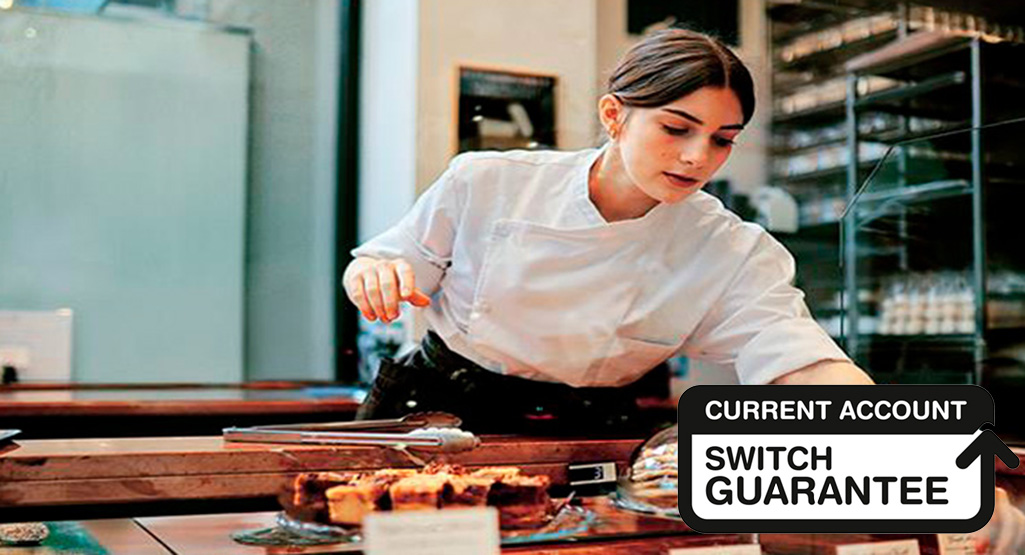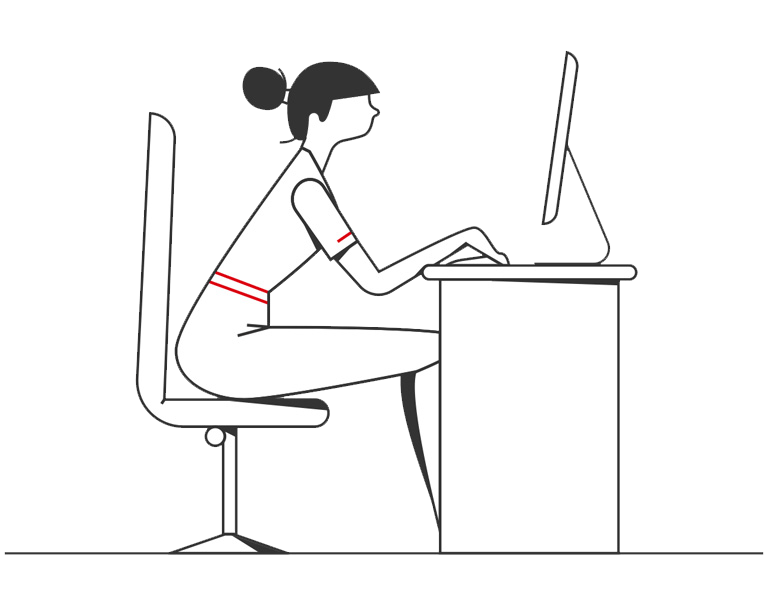- Article

- Starting a business
- Business planning
What is VAT and what are the benefits of being VAT registered?
There are plenty of things to think about when you’re running a business, including getting to grips with your tax duties. In this simple guide, you’ll find out what VAT is, which businesses must pay it, what the process involves – and why some businesses register for VAT even if they don’t have to.
What is VAT?
How does VAT work?
Who might need to register for VAT?
When to register for VAT
What is voluntary VAT registration?
What are the disadvantages of voluntary VAT registration?
What are the benefits of being VAT registered?
How much does it cost to be VAT registered?
How to register for VAT
Register a limited company for VAT
Register for VAT as a sole trader
How to calculate VAT
VAT calculation example
How to work out VAT from gross price
What is exempt from VAT?
What is the difference between exempt and zero rated VAT?
How to find a company's VAT number
Please note that this article is intended as general information only and does not constitute advice in any way. For any specific questions, you may wish to consult a qualified accountant.
What is VAT?
VAT (value added tax) is a tax the government adds to most products and services. Businesses add VAT to the price they charge consumers or other businesses they sell to, which they then collect and pass to His Majesty’s Revenue & Customs (HMRC).
You must register for VAT if your annual turnover is over a certain threshold. Visit the government’s VAT registration page for more details. Your turnover is the total value of everything you sell that is not exempt from VAT.
The current standard rate of VAT is 20%, though there is a reduced rate of 5% and 0% for certain goods and services, and some exemptions where no VAT applies. A handy guide to a list of VAT rates on a wide range of goods and services can be found on the Gov.UK website.
How does VAT work?
If your business is VAT registered, you add VAT to your prices when you sell goods or services to your customers. You then submit a VAT return to HMRC and pay any VAT due every three months, though you can ask for this to be monthly or annual. Once registered, you need to submit returns even if you have no VAT to pay or claim back.
The amount you owe is based on the last 12 months and is charged on a rolling basis. If you are a VAT-registered business, you can also reclaim the VAT you have paid on your own business purchases (input tax).
When you submit your return, you deduct this amount from the total VAT you have charged your customers (output tax), and then pay or claim back the difference.
Who might need to register for VAT?
HMRC stipulates the conditions under which businesses need to register for VAT. This can include factors such as your current or anticipated annual turnover, and whether or not you are registered in the UK or provide goods and services to the UK. For detailed information on VAT registration, and different VAT schemes available, HMRC has extensive guidance on their website.
When to register for VAT
You must register for VAT once your VAT taxable turnover exceeds the current threshold for the previous 12 months, or if you expect this to happen within the next 30 days.
It’s a good idea to know you are approaching this threshold amount so you can prepare and, if preferred, line up an accountant to help you with the process.
You will need to register for VAT if you and your business are based outside the UK and you supply goods or services to the UK, whatever your turnover.
What is voluntary VAT registration?
You can volunteer to pay VAT even if your turnover is under the minimum threshold. While this may involve some additional admin, voluntary registration comes with a number of advantages such as the ability to reclaim VAT on certain goods and services, improving your record keeping and enhancing the reputation of your business.
What are the disadvantages of voluntary VAT registration?
While there are a number of benefits to voluntary VAT registration, it may not be the right choice for businesses below the required threshold. Factors to consider:
- Increased admin and strict digital record-keeping requirements may be time-consuming. However, there are services and tools to help.
- You may need support from an accountant or agent who will charge fees for their services.
- Charging VAT will raise your prices by up to 20%, which can mean a less competitive price for consumers and businesses that can’t claim it back.
What are the benefits of being VAT registered?
There are a few benefits of VAT registration, including:
- You can claim back VAT on taxable goods and services you buy for your business.
- You can reclaim VAT you paid on goods your business still uses that you bought up to four years ago.
- It can add credibility, as it’s only mandatory for those with a turnover over a certain threshold. Also, some buyers and suppliers only work with VAT registered businesses.
- It may safeguard you if your turnover might exceed the threshold soon, helping you to avoid a penalty for potentially registering late.
How much does it cost to be VAT registered?
There is no cost to be VAT registered, as you can register and follow the process for free on the HMRC website. However, if you’d prefer to use an accountant or agent to complete your VAT returns, you’ll need to factor in their fees.
You may also need to buy software to keep digital records and be compliant with the government’s Making Tax Digital (MTD) program. Some business bank accounts offer a discount on accounting software.
Of course, if you file your VAT return late or don’t pay any tax due before the deadline on your VAT return, you could face a fine or other penalty.
How to register for VAT
You can register for VAT online through the government website, using your Government Gateway login details. Once you’ve registered, you’ll receive a VAT number and confirmation of your date of registration.
You then follow the government’s MTD process, including submitting up-to-date accounts through integrated accounting software that’s compatible with MTD and paying your VAT bill online.
You can also choose to authorise an accountant or agent to complete and submit your VAT returns on your behalf.
Register a limited company for VAT
When you register for VAT as a limited company, you’ll be asked for your:
- company name and registration number
- unique tax reference (UTR) number – a 10 digit number, also called a ‘tax reference’, assigned when registering for self-assessment or setting up a limited company
- turnover details
- bank account details
You’ll also be asked for information about corporation tax, Pay as You Earn (PAYE) and self-assessment.
Register for VAT as a sole trader
If you run your own business as a sole trader or partnership, you will need to provide your:
- date of birth and National Insurance number
- ID documents, such as your passport
- business type
- turnover and bank account details
- unique taxpayer reference (UTR), if you have one.
You’ll also be asked about payslips, a P60 and your tax return.
How to calculate VAT
To work out a VAT-inclusive price, multiply the total cost by 1.2 if it’s the standard rate of 20%, or by 1.05 if it’s the 5% reduced rate.
Even if it falls into the zero-rated or exempt categories, keep a record of everything you sell, and store digital copies of all your invoices.
VAT calculation example
Say you have a total price without VAT of £120. To work out the VAT-inclusive total, you’d do the following calculations:
- For the standard 20% rate of tax: £120 x 1.2 = £144. On the receipt or invoice, you’d break down the price (£120), the VAT (£24) and the gross price including VAT (£144).
- For the reduced rate of 5%: £120 x 1.05 = £126. The price would be £120, the VAT £6 and the price including VAT, £126.
- For zero-rated supplies: The price would be £120, the VAT £0 and the price including VAT, £120.
How to work out VAT from gross price
To calculate the amount of VAT from the total amount, or gross price, you can do the following calculation:
- For the standard 20% rate: gross price / 1.2 = net price (without VAT)
- For the reduced 5% rate: gross price / 1.05 = net price (without VAT)
To get the VAT amount, subtract the net price from the gross amount.
What is exempt from VAT?
Most goods and services have VAT added, but there are exceptions where you can’t be charged VAT or charge your customers VAT. However, these exemptions change over time. For the most up-to-date information, visit HMRC’s VAT rate guidance page.
What is the difference between exempt and zero-rated VAT?
Goods and services that are zero-rated are taxable at 0%, while those that are exempt are not subject to VAT. Though this means VAT is not added to the selling price of anything that’s VAT exempt or zero-rated, there are key differences to be aware of:
- Zero-rated supplies, such as children’s clothing and most food, are still taxable for VAT, but at the rate of 0%. You don’t charge customers VAT, but if you are VAT registered you can reclaim VAT on purchases that relate to those sales. If you mostly sell zero-rated goods, you may not need to be VAT registered, but you’ll need to apply for an exemption.
- Exempt supplies, such as membership subscriptions to professional bodies and charity fundraising events, don’t have any VAT added and aren’t included in your taxable turnover for VAT. If everything you sell is exempt, you can’t register for VAT or reclaim VAT on your purchases.
How to find a company's VAT number
You will usually find a company’s VAT number on an invoice or on its website. Otherwise, ask the company direct, as you will need the company’s VAT number to claim back VAT. You can also check a VAT number for a UK company online, or by contacting HMRC.
All information in this post is accurate as of publication. However, tax rules can change over time. Consult a tax advisor or accountant before making tax decisions. The value of any tax benefits described depends on your individual circumstances. Tax rules may change in the future.
Disclaimers
1. Free UK digital banking means day-to-day standard electronic transfers made through Business Internet Banking and HSBC UK Business Banking app are free. Other charges apply e.g. cheques and CHAPS. See Business Price List for details. Subject to application, eligibility, credit check and T&Cs.
2. Borrowing is subject to application, eligibility, affordability and credit check. T&Cs, fees, charges and rates apply. For loans, you don’t need to open or maintain an HSBC Business Current Account unless a debenture or fixed charge over book and other debts is required.





